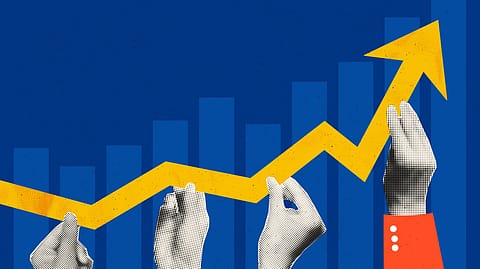8th Pay Commission hikes will depend on the fitment factor; gains may range between 13% and 40%, says Nexdigm’s Krishnamoorthy
The fitment factor is reported in various sources to range from about 1.83 to 2.46, meaning basic pay might be multiplied by 1.83 to 2.46 in many estimates

The announcement regarding the 8th Pay Commission has raised employees' expectations for a salary revision. According to Ramachandran Krishnamoorthy, Director – Payroll Services, Nexdigm, this commission could notably change pay structures through its fitment factor mechanism and recalculation of necessary allowances.
The 8th Pay Commission has been announced and is expected to revise salaries, allowances and pensions for central government employees and pensioners. “Implementation is expected from January 1, 2026 (or thereabouts), though the exact date may vary,” said Ramachandran Krishnamoorthy, Director – Payroll Services, Nexdigm. He added that one of the key mechanisms is the “fitment factor” — a multiplier applied to existing basic pay — along with recalculation of allowances such as Dearness Allowance (DA) and House Rent Allowance (HRA).
The fitment factor is reported in various sources to range from about 1.83 to 2.46, meaning basic pay might be multiplied by 1.83 to 2.46 in many estimates. “Some optimistic estimates (or media reports) mention a fitment factor up to 2.86,” Krishnamoorthy pointed out. Because of how DA and basic pay work, he said, the effective salary increase — for take-home pay or total compensation — is estimated to be between 13% and 40–50%, depending on assumptions.
For example, Krishnamoorthy explained, “With a fitment factor of around 1.8, a basic of ₹18,000 might go to ₹32,000, but after adjusting DA and other components, the net increase was estimated at around 13%.” Another estimate, he said, suggested a salary hike of about 30–34% under the 8th Pay Commission. “Yet other projections,” he added, “suggest up to 40–50% increase in basic pay under a high fitment factor scenario.”
Under the 7th Pay Commission, which became effective in January 2016, the fitment factor was around 2.57. “Estimates suggest the 7th CPC increase in salaries, pensions and allowances was about 23–25% in real terms,” Krishnamoorthy said. For the 8th Pay Commission, he noted, if the fitment factor is lower (around 1.8), the increase might be modest at around 13% net, but if higher (2.46 or greater), then the rise could exceed 30%.
“The 8th Pay Commission will bring significant increases, that's for sure, though the exact amount is not final yet,” said Krishnamoorthy. He believes realistic increments for many employees could be in the 20–35% range, with the possibility of higher gains for lower grades or under favourable fitment-factor assumptions. “Because DA and other allowances interplay with basic pay,” he emphasised, “the headline multiplier — the fitment factor — doesn’t directly translate to the same percentage increase in take-home salary.”
“If you are a government employee or pensioner under the central government,” Krishnamoorthy concluded, “you can expect your pay and benefits to go up noticeably when implemented — likely in 2026.”